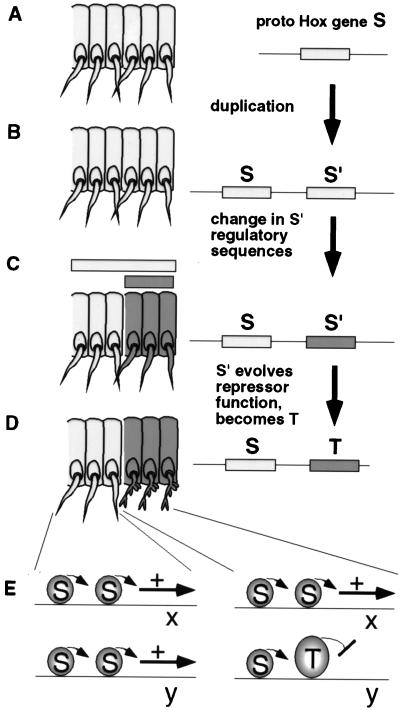Figure 5.
How acquisition of novel activation and repression functions in Hox proteins might lead to incremental morphological changes in evolution. A shows a region of arthropod trunk with six segments. Proto-Hox gene S is expressed in all. In B, a tandem genomic duplication has occurred, to generate proto-Hox genes S and S′. In C, S′ regulatory sequences have undergone mutations so that S′ transcripts are restricted to the three posterior segments. S transcripts still accumulate in all six segments. In D and E, gene S′ is transformed to gene T by accumulating amino acid substitutions (or other deletions or insertions) that alter its balance of transcriptional activation/repression functions. When accompanied by changes in gene y regulatory sequences that permit the binding of T-specific corepressors, proto-Hox T protein is capable of repressing gene y in the three posterior segments. Other downstream genes (x) could still be activated by proto-Hox S (or proto-Hox T) in all six segments. Such subtle changes in downstream gene regulation would sometimes result in subtle tissue-specific morphological differences between the anterior and posterior groups of segments (see the appendages in D).

